How to Produce a Compelling Newsletter for Your Business
Experts share 10 tips for engaging prospective and current clients with email newsletters
Sitting down to get started on your business’ newsletter can be a daunting task. Where should you begin? What type of content should you include? How can you best feature your projects? And most important, how can your newsletter snag you some leads for new projects? Here’s some valuable advice from experts who have mastered the art of the newsletter.
Maremont puts together and writes newsletter content for some of her clients. “I usually like to kick it off with two meatier articles,” she says. “Often, one will feature a new project and the other will be something seasonal, such as a roundup of interesting fireplaces from the designer’s portfolio in the winter, or outdoor kitchen projects for spring.”
In three smaller items, she’ll share information such as recently received awards, an article that featured her client or an upcoming event they’re hosting or attending. “Grab readers’ attention with a really great image for each story,” Maremont says. Your letter should also include an easy link for potential clients to contact you for a consultation, and it can also include links to your social media accounts.
In three smaller items, she’ll share information such as recently received awards, an article that featured her client or an upcoming event they’re hosting or attending. “Grab readers’ attention with a really great image for each story,” Maremont says. Your letter should also include an easy link for potential clients to contact you for a consultation, and it can also include links to your social media accounts.
2. Tailor Your Content Seasonally
Readers will respond to content that can help them at home. Such content will make them appreciate seeing your newsletter in their inboxes and want to open it. Try to tailor the content to the time of year. For example, in January people are cleaning house and looking for organizational tips for spaces like closets, offices and kitchens. In the spring, they’re starting to think about improving their outdoor spaces.
“I may write an article about five ways to cozy up your living room in the winter, using photos from my clients’ projects,” Maremont says. Holidays also provide good opportunities for design tips and showing off any related projects of your own.
Grab your readers’ attention with art to accompany the post. Seeing a great photo of a closet that looks like what a reader wished their own closet looked like can capture their attention and make them read on. A beautifully laid out picnic table for a Memorial Day barbecue can inspire, or a photo of an inviting sunroom might draw them in on a cold winter’s day. More important, it may give them that nudge they need to start planning a project and reach out to you.
40 Home Design Trends That Will Shape 2022
Readers will respond to content that can help them at home. Such content will make them appreciate seeing your newsletter in their inboxes and want to open it. Try to tailor the content to the time of year. For example, in January people are cleaning house and looking for organizational tips for spaces like closets, offices and kitchens. In the spring, they’re starting to think about improving their outdoor spaces.
“I may write an article about five ways to cozy up your living room in the winter, using photos from my clients’ projects,” Maremont says. Holidays also provide good opportunities for design tips and showing off any related projects of your own.
Grab your readers’ attention with art to accompany the post. Seeing a great photo of a closet that looks like what a reader wished their own closet looked like can capture their attention and make them read on. A beautifully laid out picnic table for a Memorial Day barbecue can inspire, or a photo of an inviting sunroom might draw them in on a cold winter’s day. More important, it may give them that nudge they need to start planning a project and reach out to you.
40 Home Design Trends That Will Shape 2022
Here are some ideas for seasonal content.
Spring. Advice for outdoor spaces and spring cleaning, inspiring photos from a botanical garden you visited, a project where you used a spring color palette.
Summer. Summer party tablescapes, coastal-inspired decor, a roundup of beach house projects, inspiration photos from a trip you took.
Spring. Advice for outdoor spaces and spring cleaning, inspiring photos from a botanical garden you visited, a project where you used a spring color palette.
Summer. Summer party tablescapes, coastal-inspired decor, a roundup of beach house projects, inspiration photos from a trip you took.
Fall. Projects that make a home cozier for cold-weather nesting, autumn-leaf-inspired color palettes, fun Halloween or Thanksgiving tablescape ideas.
Winter. Tips for holiday tablescapes and decorating, advice for setting up a welcoming guest room for overnight guests, good ways to cozy up rooms.
Winter. Tips for holiday tablescapes and decorating, advice for setting up a welcoming guest room for overnight guests, good ways to cozy up rooms.
3. Provide Insider Insight
Another great way to keep your subscribers engaged is by making them feel like they’re getting insider information. As a home pro, you probably attend events that past, current and potential clients would like to know about. Give your readers a peek inside the events you get to go to. The High Point, Atlanta and Las Vegas markets; the International Contemporary Furniture Fair; the International Builders’ Show; the Kitchen & Bath Industry Show; designer showhouses; Greenbuild International Conference and Expo; and The International Surface Event are all great newsletter fodder.
Ideas for content include sharing your favorite finds for the home; tips about sustainable building; and decorating trends such as materials, colors, patterns and types of textiles that you spotted with your expert eye.
8 Trends in New Home Design Products Featured at KBIS 2022
Another great way to keep your subscribers engaged is by making them feel like they’re getting insider information. As a home pro, you probably attend events that past, current and potential clients would like to know about. Give your readers a peek inside the events you get to go to. The High Point, Atlanta and Las Vegas markets; the International Contemporary Furniture Fair; the International Builders’ Show; the Kitchen & Bath Industry Show; designer showhouses; Greenbuild International Conference and Expo; and The International Surface Event are all great newsletter fodder.
Ideas for content include sharing your favorite finds for the home; tips about sustainable building; and decorating trends such as materials, colors, patterns and types of textiles that you spotted with your expert eye.
8 Trends in New Home Design Products Featured at KBIS 2022
4. Show Off Your Latest Projects
Of course, potential clients will want to see your work. This can include videos of the process as well as the finished product. Once the photos are taken, choose the most compelling one for the top of the newsletter. Another great way to grab attention is with two photos that show a dramatic before-and-after reveal.
If the homeowners have written you a review, you can include their praises in your newsletter (with their permission, of course).
Surefire Ways to Get Clients to Review Your Business
Of course, potential clients will want to see your work. This can include videos of the process as well as the finished product. Once the photos are taken, choose the most compelling one for the top of the newsletter. Another great way to grab attention is with two photos that show a dramatic before-and-after reveal.
If the homeowners have written you a review, you can include their praises in your newsletter (with their permission, of course).
Surefire Ways to Get Clients to Review Your Business
5. Don’t Be Afraid to Get Personal
Craig O’Connell Architecture is a small family business. Craig is the architect and his wife, Jessica, a writer and communications expert, oversees their newsletters. She thinks carefully about the kind of content that engages their audience, and she believes in getting personal.
“Our newsletter is really a vehicle to link people to our blog, but we like to include variety in the topics and make sure it’s not all about self-promotion,” Jessica says. “COVID-19 really motivated us to start sharing more of our personal life as a family and as a business.”
This type of connection-making content might include a personal anecdote from Craig, his experience about finding a good work-life balance or even just a book he’s enjoying at the moment. “We got a lot of great feedback from our readers and had increased responses to newsletters when we got more personal,” Jessica says.
Providing help to their clients through their newsletter is also important to the O’Connells. “We don’t have some overwhelming marketing strategy,” Jessica says. “We try to do what feels natural and organic for us and stay true to our brand.”
Craig O’Connell Architecture is a small family business. Craig is the architect and his wife, Jessica, a writer and communications expert, oversees their newsletters. She thinks carefully about the kind of content that engages their audience, and she believes in getting personal.
“Our newsletter is really a vehicle to link people to our blog, but we like to include variety in the topics and make sure it’s not all about self-promotion,” Jessica says. “COVID-19 really motivated us to start sharing more of our personal life as a family and as a business.”
This type of connection-making content might include a personal anecdote from Craig, his experience about finding a good work-life balance or even just a book he’s enjoying at the moment. “We got a lot of great feedback from our readers and had increased responses to newsletters when we got more personal,” Jessica says.
Providing help to their clients through their newsletter is also important to the O’Connells. “We don’t have some overwhelming marketing strategy,” Jessica says. “We try to do what feels natural and organic for us and stay true to our brand.”
“I think that getting more personal in a newsletter is a really good idea,” Maremont says. “Let your personality shine through. You want people to like you and want to work with you. So adding that human element is really important.”
And she echoed the idea of the newsletter-blog crossover. “Having a blog on a website helps so much with search engine optimization,” Maremont says. You can double-dip with your newsletter content by posting the same articles in your blog. You may choose to just put a few lines of the article in the newsletter and then add a “read more” link that connects to the full article in the blog. And be cognizant of the keywords you want to use to maximize search engine optimization when crafting the articles you’ll post on your blog.
5 Tips for Attracting the Homeowners and Projects You Want
And she echoed the idea of the newsletter-blog crossover. “Having a blog on a website helps so much with search engine optimization,” Maremont says. You can double-dip with your newsletter content by posting the same articles in your blog. You may choose to just put a few lines of the article in the newsletter and then add a “read more” link that connects to the full article in the blog. And be cognizant of the keywords you want to use to maximize search engine optimization when crafting the articles you’ll post on your blog.
5 Tips for Attracting the Homeowners and Projects You Want
6. Take Readers With You on Inspiring Trips
When we covered how to approach your newsletter during the coronavirus crisis back in 2020, interior designer Ellen Nystrom shared that she likes to include inspirational photos from trips she’s taken. She features them in her newsletter and then links to additional content in her website’s blog. “I consider the blog to be like a design journal where I capture things that will inspire our projects, whether directly or indirectly,” she told Houzz.
Sharing photos from your travels will give your readers some insight into where you find inspiration as a professional. It will also help them feel that personal connection to you. Perhaps you spied a tile in Morocco 20 years ago that has always stuck with you, or you were struck by the look of the limestone in Texas Hill Country or experienced a garden in Japan that brought you a feeling of peace. Share these images with your readers. And if these places inspired a particular material palette or completed project, share photos of those in the travel inspiration article as well.
When we covered how to approach your newsletter during the coronavirus crisis back in 2020, interior designer Ellen Nystrom shared that she likes to include inspirational photos from trips she’s taken. She features them in her newsletter and then links to additional content in her website’s blog. “I consider the blog to be like a design journal where I capture things that will inspire our projects, whether directly or indirectly,” she told Houzz.
Sharing photos from your travels will give your readers some insight into where you find inspiration as a professional. It will also help them feel that personal connection to you. Perhaps you spied a tile in Morocco 20 years ago that has always stuck with you, or you were struck by the look of the limestone in Texas Hill Country or experienced a garden in Japan that brought you a feeling of peace. Share these images with your readers. And if these places inspired a particular material palette or completed project, share photos of those in the travel inspiration article as well.
7. Give Your Readers Good Takeaways
The O’Connells like to include educational content they think will be of interest to their audience — and in the process they’re able to show off their own projects.
“We’ve written some different posts about the history of architectural styles, including midcentury modern houses in the San Francisco Bay Area and Victorian-era homes in San Francisco,” Jessica says. The posts provide a chance to share photos of work Craig has completed on these types of homes.
The O’Connells like to include educational content they think will be of interest to their audience — and in the process they’re able to show off their own projects.
“We’ve written some different posts about the history of architectural styles, including midcentury modern houses in the San Francisco Bay Area and Victorian-era homes in San Francisco,” Jessica says. The posts provide a chance to share photos of work Craig has completed on these types of homes.
8. Introduce Your Team and Colleagues
Introducing a member of your team is a great way for your readers to get to know your firm better. Include a photo and short biography highlighting their experience in the field. Include a few fun facts, such as their hobbies and a new trend that excites them.
You can stretch beyond your firm to include colleagues you collaborate with who make a difference on your projects. Jessica O’Connell likes to feature craftspeople who contribute to the firm’s projects. “We’ve built solid relationships with these people,” she says. She’ll feature a photo of the person and of their work on the architecture firm’s projects. For example, she recently featured a favorite custom concrete shop. Jessica shared photos of the craftsperson and some information about them, then she added photos of a custom concrete countertop and sink the person made for one of Craig’s projects.
4 Topics to Cover With Potential Clients to Screen for Fit
Introducing a member of your team is a great way for your readers to get to know your firm better. Include a photo and short biography highlighting their experience in the field. Include a few fun facts, such as their hobbies and a new trend that excites them.
You can stretch beyond your firm to include colleagues you collaborate with who make a difference on your projects. Jessica O’Connell likes to feature craftspeople who contribute to the firm’s projects. “We’ve built solid relationships with these people,” she says. She’ll feature a photo of the person and of their work on the architecture firm’s projects. For example, she recently featured a favorite custom concrete shop. Jessica shared photos of the craftsperson and some information about them, then she added photos of a custom concrete countertop and sink the person made for one of Craig’s projects.
4 Topics to Cover With Potential Clients to Screen for Fit
9. You Can Keep It Short and Sweet
Interior designer Susan Lobalzo believes less is more when it comes to her newsletters. They consist of a catchy title, one eye-catching photo of her work and three lines or less of text describing it. Finally, she ends the newsletter with a link to her website, inviting her readers to check out her portfolio.
She sends her newsletter once a month and thinks about timely posting topics in between. “I have little notes all over my office with ideas,” Lobalzo says. “For instance, right now I have ‘Cabin Fever’ and ‘Let the Sun Shine’ written down for future posts. I think a catchy subject line is important.” A recent post asked readers, “Feeling the Winter Blues?” in the subject line, then featured an inviting sunroom photo with a few lines describing it.
“It’s really just reaching out to subscribers, especially past clients, to make them remember me,” Lobalzo says. Her approach has worked — she’s had quite a few past clients give her a call regarding new projects after they received her newsletter nudge.
Interior designer Susan Lobalzo believes less is more when it comes to her newsletters. They consist of a catchy title, one eye-catching photo of her work and three lines or less of text describing it. Finally, she ends the newsletter with a link to her website, inviting her readers to check out her portfolio.
She sends her newsletter once a month and thinks about timely posting topics in between. “I have little notes all over my office with ideas,” Lobalzo says. “For instance, right now I have ‘Cabin Fever’ and ‘Let the Sun Shine’ written down for future posts. I think a catchy subject line is important.” A recent post asked readers, “Feeling the Winter Blues?” in the subject line, then featured an inviting sunroom photo with a few lines describing it.
“It’s really just reaching out to subscribers, especially past clients, to make them remember me,” Lobalzo says. Her approach has worked — she’s had quite a few past clients give her a call regarding new projects after they received her newsletter nudge.
10. Choose a Frequency That Works for You
Putting together a newsletter takes a lot of effort. If it feels overwhelming, shoot for once per quarter. Once you get the hang of it, try to send a newsletter every two months. “Six times a year is great for people who like interior designers and architects who are selling services,” Maremont says. If you find you enjoy the newsletter experience and are seeing great results for your business, aim for once a month. “Anything more frequent than that seems like spam to me,” Lobalzo says. “I can keep up with once per month and it works nicely with the seasons.”
Putting together a newsletter takes a lot of effort. If it feels overwhelming, shoot for once per quarter. Once you get the hang of it, try to send a newsletter every two months. “Six times a year is great for people who like interior designers and architects who are selling services,” Maremont says. If you find you enjoy the newsletter experience and are seeing great results for your business, aim for once a month. “Anything more frequent than that seems like spam to me,” Lobalzo says. “I can keep up with once per month and it works nicely with the seasons.”
Join the conversation: Do you send out an email newsletter? Share your tips in the Comments.
More for Pros on Houzz
Read more stories for pros
Learn about Houzz Pro software
Talk with your peers in the Pro-to-Pro discussions
Join the Houzz Trade Program
More for Pros on Houzz
Read more stories for pros
Learn about Houzz Pro software
Talk with your peers in the Pro-to-Pro discussions
Join the Houzz Trade Program
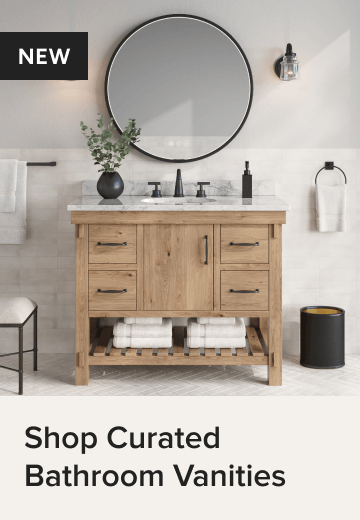
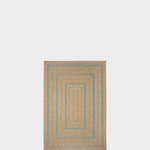
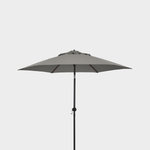
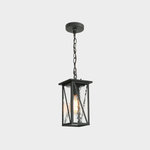

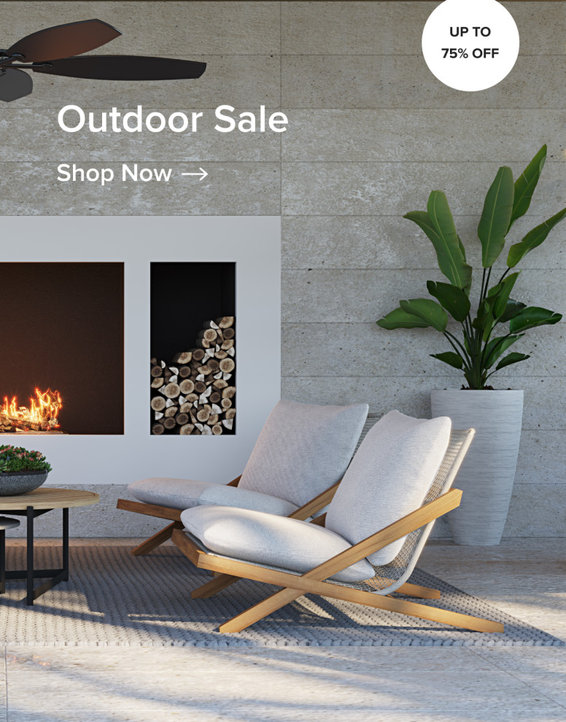



There isn’t much point in putting effort into your newsletter if you don’t have an audience to engage. “I can’t stress how critical building your mailing list is,” says Jill Maremont, owner and CEO of Inspiration Station Collective, a firm that specializes in helping design professionals with public relations, branding and marketing strategies. She recommends always having a clear link on your website where people can sign up to receive your newsletter.
“You can also build your list by hosting and participating in events,” Maremont says. “For example, if you sit on a design panel, negotiate receiving a list of the attendees’ emails. Then follow up with an email thanking them for participating.” If you host an event, she recommends holding a drawing that people enter by submitting their business cards.
The Houzz Pro Email Marketing tool lets you create mailing lists from your leads and client contacts in Houzz Pro. It offers email templates, or you can design your own.
Learn more about Houzz Pro all-in-one business software